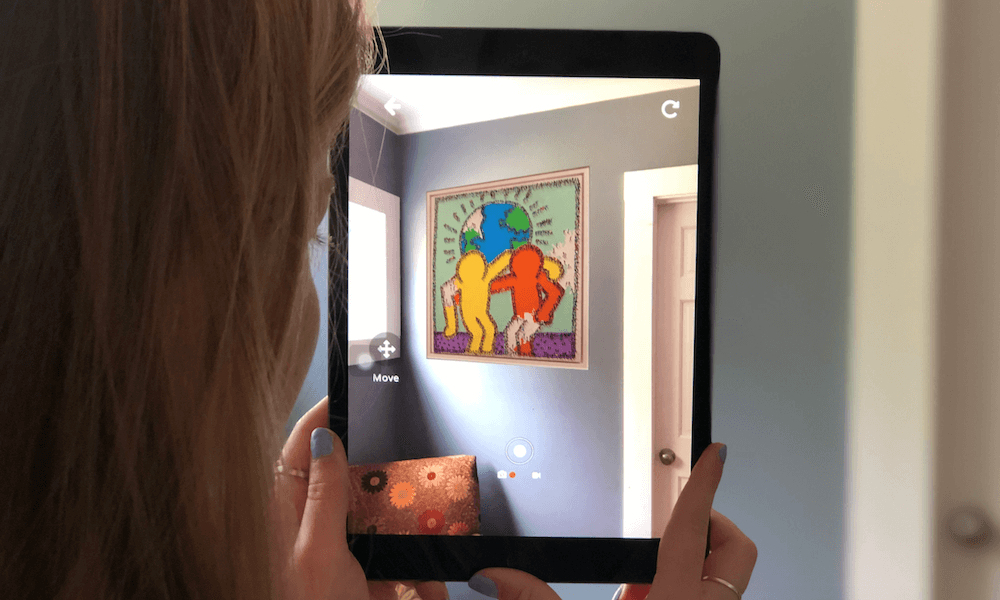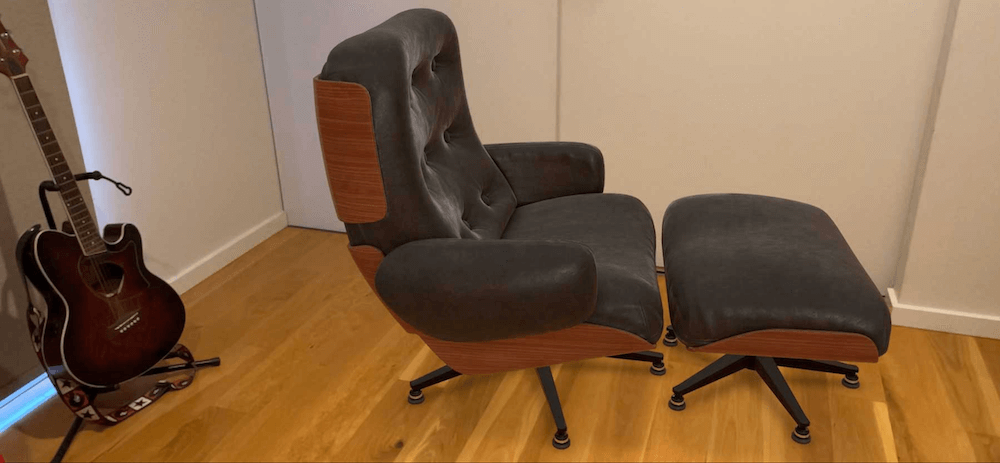Online shopping has become especially popular in the past few years, and it’s not just people ordering socks from Amazon. Consumers are increasingly turning to the internet to shop for unique items such as home decor, formal attire, and custom-made products. Homebuyers commonly browse for potential houses on the internet, and landlords rely on online postings to attract new tenants, for example.
What is Augmented Reality?
Augmented reality (AR) is an important factor in many website designs. AR allows users to go beyond photos and view scenes in 3D. Some AR plugins allow users to virtually “try out” products in their bodies or in their houses. AR can also enable consumers to take an augmented tour of a physical area, such as a resort/hotel or home listing. This is a way that AR can enable people to read thorough descriptions of each area on their phone as they walk through the physical building.
Customers can also use AR to virtually project items in their existing home or backyard to see how it fits in in terms of size, shape and color compared to the other existing items in their home. For example, customers can use AR to see how a new piece of furniture will look in their living area to get a sense of the style and whether it will fit in a certain room. This can help boost sales and lower abandoned cart rates. Furthermore, good AR can decrease the costly refund process while increasing customer confidence that they’ve found the right product before the item ever even arrives at their door.
How to Add AR to WordPress
If you’re interested in incorporating AR to gain a competitive edge for your business, you are in the right place. AR can seem overwhelming but can actually be quite simple to integrate into your existing website, and can really boost sales! Here are the top four WordPress plugins that allow you to use AR in your web design.
So, you’ve painstakingly designed your commercial website and are working hard to get more traffic to your site. How can you integrate AR technology in your website to boost sales? Take a look at these four plugins:
Disclaimer: WPExplorer is an affiliate for one or more products listed below. If you click a link and complete a purchase we could make a commission.
1. AR for WooCommerce

WooCommerce is a fantastic reason to opt for a WordPress developer for your digital store, since you can benefit from their open-source eCommerce plugins. WooCommerce is equipped with an AR plugin that enables 3D models to be integrated directly into your WooCommerce cart.
You can expect to see your abandoned shopping cart rate go down when consumers are impressed by this display. After all, it can be hard to truly display the rich hues and complex fabrics that are offered through many fashion eCommerce stores by a photo alone. Shoppers who purchase clothes and accessories online often want to make sure a particular color or fabric will match an existing outfit, which can be hard with a photo alone.
AR plugins like the one offered through WooCommerce allow consumers to project a particular piece of clothing or accessory onto their bodies and see how it compares to other outfits they have, similar to trying on clothes in front of a mirror at a physical store. Younger consumers, who are already familiar with features such as filters on Snapchat or TikTok that give them a different hairstyle or eye color at the tap of a button, will acclimate to AR very quickly in their shopping routines.
You can incorporate AR as a means to boost confidence among your shoppers, so they can truly trust the depiction of the product they are viewing rather than be surprised by a different shade or fabric quality once it is delivered. This can also help you cut back on costly returns and refunds, and is especially useful for dropshipping or fashion websites with a thin profit margin.
Like AR for WordPress, this plugin can be used in web browsers and with both Apple and Android phones. To install, first upload the ZIP file to the WP Content Plugins directory. You can then get the plugin activated through the menu in WordPress and start playing around with the settings to begin.
2. AR for WordPress

AR for WordPress can display 3D models with a browser as well as Android AR and iOS applications. This means that no matter how a user is accessing your website – through their smartphone or their computer – they most likely can enjoy the AR for WordPress features you have featured.
You can install this plugin by uploading the AR WordPress ZIP file into the WP Content Plugins directory and then opening it. You can arrange your settings and get the plugin activated through the menu area in WordPress.
3. CartMagician WooCommerce AR Plugin

Are you looking for an even more premium version of an AR plugin? Try CartMagician WooCommerce AR Plugin, which uses WebAR technology to create an AR experience contained within your website. This is a really useful plugin because all your customers need to do is open up your website and press on the item in order to start enjoying the AR experience – no additional apps or downloads are required at all.
If you already use WooCommerce, this plugin makes it very easy to add, organize and manage AR content. With this plugin, you can upload hosted files (USDZ and GLB). You can even create a WebAR ‘View-in-AR’’ button at any point on your main product page. However, there is currently an annual subscription price of $149 per year in order to utilize these premium features.
4. Virtooal Try-on Mirror

Physical cosmetics and beauty stores are still highly popular in an era where brick-and-mortar stores are largely in decline. This is because there are always many customers who are hesitant to try new shades or formulas without knowing for sure how the products would look on them. Naturally, they shop for these products at physical stores rather than online.
This creates a problem for beauty and cosmetics online stores, who sell to a demographic that generally prefers shopping online. An estimated 67% of millennial shoppers say they prefer shopping online to in-store, yet it’s common to see this same demographic flocking to cosmetics stores such as Sephora at the mall. AR just might offer a solution to these online stores so they could become a more appealing option to these shoppers.
The company behind Virtooal Try-on Mirror has been developing AR technology for the last fifteen years. Customers can simply turn their web cameras on to try out different items wherever they are. This plugin is extremely helpful for online retailers that sell eyewear, makeup, hats, and jewelry. The plugin can be embedded with a simple, short HTML code as well.
One helpful feature found in the Virtooal Try-On Mirror plugin is that customers have the choice to upload a flattering photo of themselves for the try-on. Alternatively, they can simply turn on their web camera to try out a product live.
The plugin is powered by HTML5 technology and is compatible with most web browsers as well as Android and iPhones. The plugin also uses automatic face recognition when trying out products. Furthermore, you can test out this product through the demo store before downloading it.
However, only the basics of this plugin are available to web designers for free. You will have to pay for the premium version, which includes extra features. These additional features include the ability to create XML feeds for products and category pairing with pre-organized Virtooal categories.
Augmented reality is gaining traction, so don’t be surprised if you see more and more of your competitors start using it in their web design. Whether you are selling large products that are cumbersome to move, such as furniture, or selling makeup and accessories that look different on a variety of skin tones, AR can help you boost sales. It is just one of the many ways in which the line separating “real” life and virtual life is being blurred.
By allowing your customers to visualize how a certain product will look when it is in their life, you can help grow sales quickly when customers feel less uncertain about how a product will actually look once it’s delivered. Thankfully, you are spoiled for choice when it comes to your different options for integrating AR. Hopefully, you’ve found this article helpful in incorporating AR into product features on your website.